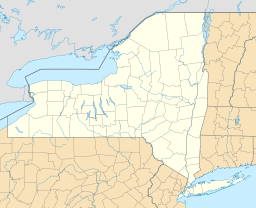Tongue Mountain facts for kids
Quick facts for kids Tongue Mountain |
|
|---|---|
| Highest point | |
| Elevation | 3,159 feet (963 m) |
| Geography | |
| Location | ENE of Blue Mountain Lake, New York, U.S. |
| Topo map | USGS Dun Brook Mountain |
Tongue Mountain is a cool mountain located in the amazing Adirondack Mountains of New York State. It's found in a town called Indian Lake, just east-northeast of a pretty spot known as Blue Mountain Lake. This mountain is a great place for adventures and exploring nature!
Contents
Discovering Tongue Mountain
Tongue Mountain is a fun place to learn about nature and enjoy the outdoors. It's part of a much bigger area known for its beautiful forests and lakes.
Where is Tongue Mountain?
Tongue Mountain is in the northern part of New York State. It's close to the small community of Blue Mountain Lake. Imagine a map: Tongue Mountain is a bit to the right and up from Blue Mountain Lake. It's also within the borders of the town of Indian Lake. This area is known for its peaceful forests and clear waters.
How Tall is It?
Tongue Mountain stands tall at about 3,159 feet (which is about 963 meters) above sea level. While it might not be the tallest mountain in the world, it's still a significant peak in its area. Its height offers great views of the surrounding Adirondack landscape.
Exploring the Adirondacks
Tongue Mountain is part of the famous Adirondack Mountains. This whole region is a special place with lots to see and do.
What are the Adirondacks?
The Adirondack Mountains are a large group of mountains in northern New York State. They are not just mountains; the entire area is a huge park called the Adirondack Park. It's one of the largest protected areas in the United States! This park is a mix of public and private lands, with many forests, lakes, and rivers. It's a fantastic place for wildlife and outdoor activities.
Fun Things to Do Near Tongue Mountain
Because Tongue Mountain is in the Adirondacks, there are many exciting things to do nearby.
- Hiking: Many trails lead up mountains like Tongue Mountain, offering amazing views.
- Boating and Kayaking: The nearby lakes, like Blue Mountain Lake, are perfect for paddling.
- Wildlife Watching: You might spot deer, bears, or many types of birds.
- Camping: There are many campsites where you can stay overnight and enjoy the stars.
- Photography: The scenery is so beautiful, it's a great place to take pictures.
Nature and Wildlife
Mountains like Tongue Mountain are home to many different plants and animals. They create a special environment where nature thrives.
Plants of Tongue Mountain
The slopes of Tongue Mountain are covered with different types of trees. You'll find evergreen trees like pines and spruces, especially higher up. Lower down, there might be deciduous trees that change color in the fall, like maples and birches. The ground is often covered with ferns, mosses, and wildflowers, especially in spring and summer. Each season brings new colors and life to the mountain.
Animals You Might See
The forests around Tongue Mountain are home to various animals.
- Mammals: You might see white-tailed deer, which are common. Black bears also live in the Adirondacks, so it's good to know how to be safe around them. Smaller animals like squirrels, chipmunks, and rabbits are also present.
- Birds: Many types of birds live here, from tiny songbirds to larger birds of prey like hawks and owls.
- Reptiles and Amphibians: You might find frogs, salamanders, and different kinds of snakes, though most are harmless.
How Mountains Are Made
Mountains like Tongue Mountain are formed over millions of years. It's a slow but powerful process.
Earth's Moving Plates
The Earth's outer layer is made of huge pieces called tectonic plates. These plates are always moving, very slowly, like giant rafts on a liquid layer. When these plates crash into each other, or one slides under another, the land gets pushed up.
Lifting and Folding
Over a very long time, the immense pressure from these moving plates can cause the Earth's crust to fold, crack, and lift. This lifting and folding create mountains. Erosion by wind, water, and ice then shapes these mountains, carving out valleys and peaks. Tongue Mountain, like many others in the Adirondacks, was formed by these powerful forces of nature.



